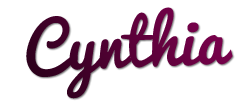Why Morning Tubs Will Be Your Favorite
Routine This Year
I used to start my school day with a worksheet.
You know the kind—meant to keep kids busy while I took attendance and got
things settled. But more often than not, it led to a chorus of “I need help!”
and papers half-finished (or scribbled on and crumpled like a fast-food
napkin).
So I tried something different. I swapped those worksheets for hands-on
tubs filled with simple, engaging activities… and I’ve never looked back.
Psst—new to Morning Tubs?
I’ve got a free Morning Tub Starter Kit you can grab to see what they’re all
about.
🎁 Click here to get your freebie!
Here’s why I think Morning Tubs might just become your favorite routine
this year, too:
✨ They give your morning a calm, focused start.
You’re trying to do all the things—take attendance, respond to an email, tie a
shoelace, and smile at parents hovering in the doorway. Morning tubs let your
students dive right in independently, giving you time to breathe (and sip your
coffee while it’s still hot).
🧠 They build skills without feeling
like “work.”
My tubs are filled with math, literacy, critical thinking, and fine motor
tasks—disguised as games, puzzles, and challenges. The best part? Your students
won’t even realize how much learning they’re doing.
🎯 They’re easy to prep and reuse.
Print, laminate, and pop them in bins. Done. I even include editable direction
cards to make your life easier. (Because heaven knows you already have enough
on your plate.)
📚 They grow with your students.
I’ve created a set for each grade—2nd, 3rd, and 4th—so the content hits that
just-right sweet spot. The August tubs are perfect for Back-to-School, with a
balance of review and confidence-boosting tasks.
If you’ve never tried Morning Tubs before, August is the perfect time to
start. They’ll help you and your students settle into a routine that
feels manageable and meaningful from Day One.
👉 Check out my August Morning Tubs here
(available for 2nd, 3rd, and 4th grade)
Or if you’re all-in and want to make mornings easier all year long…
💡 Peek at the full Morning Tub Bundles here
Whatever
you choose, just know this:
A smooth morning routine isn’t just possible—it’s just a tub away. 💛


.png)


.png)
.png)

.png)



.png)


.png)
.png)






.png)

.png)
.png)
.png)

.png)
.png)
.png)
.png)
.png)
.png)